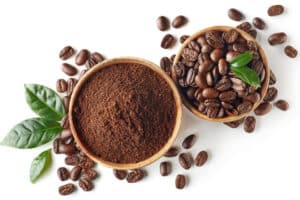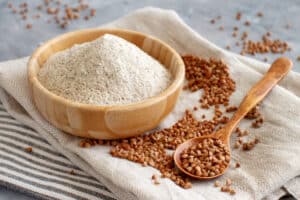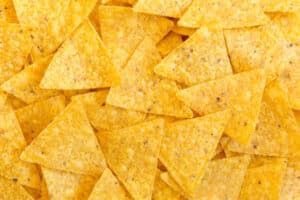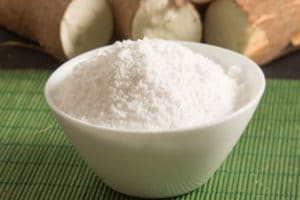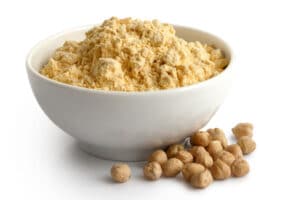Spelt is a type of ancient grain. It contains nutritious vitamins and minerals and has slightly higher levels of protein than regular all-purpose flour. It’s also a great source of fiber.
If you’ve run out of spelt flour, there are many different options such as Kamut flour, Einkorn flour, Rice flour, barley flour. If you have a dietary restriction, you can even use gluten-free or wheat-free alternatives.
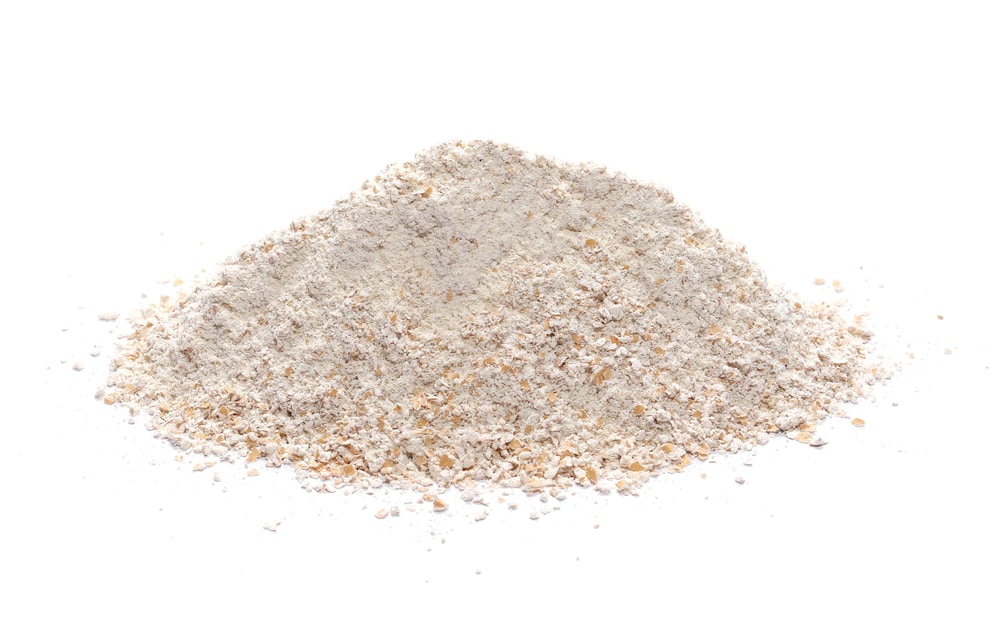
5 Recommended Spelt Flour Substitute
Kamut Flour: Best Spelt Flour Substitute
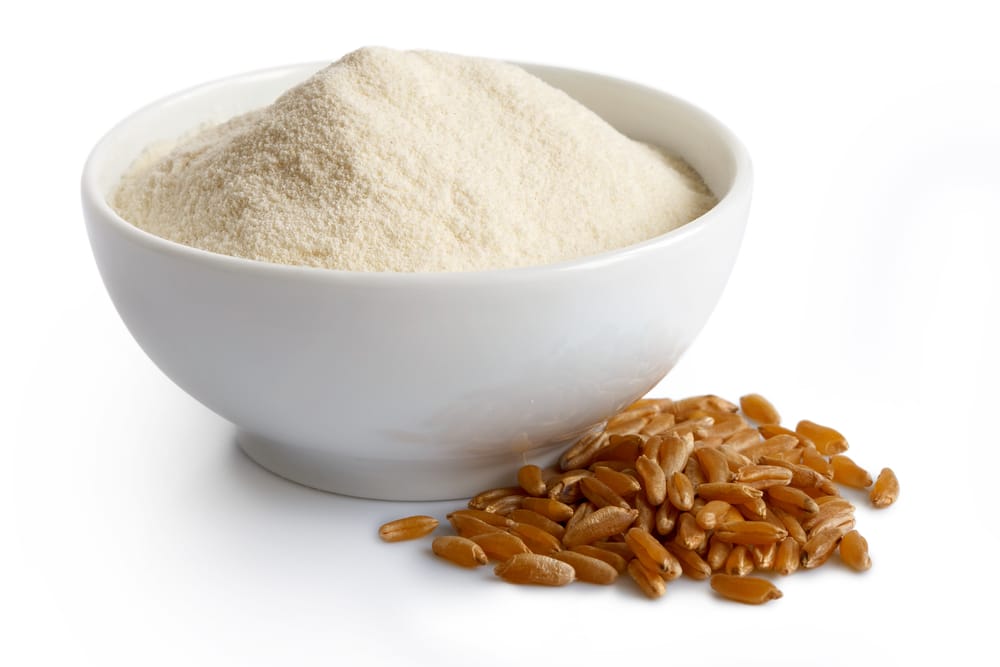
Kamut flour is the best spelt flour substitute for people with minor wheat allergies. Although Kamut is a type of wheat grain, some people with wheat sensitivities can easily digest Kamut. Therefore, some manufacturers may advertise Kamut flour as wheat-free.
However, this can be misleading. Not all people with wheat allergies can eat Kamut flour without having an allergic reaction. Therefore, it’s essential to consume with caution, especially if you have severe wheat allergies.
You can generally substitute equal amounts of spelt flour for Kamut flour, but Kamut flour tends to be more absorbent. You might have to use a little more water than the original amount in a recipe.
Kamut flour has a deliciously buttery and sweet flavor. It works exceptionally well for making homemade pasta. You can also use it to make bread, but it has an even lower gluten content than spelt flour, so it can be particularly challenging to make it rise.
Einkorn Flour
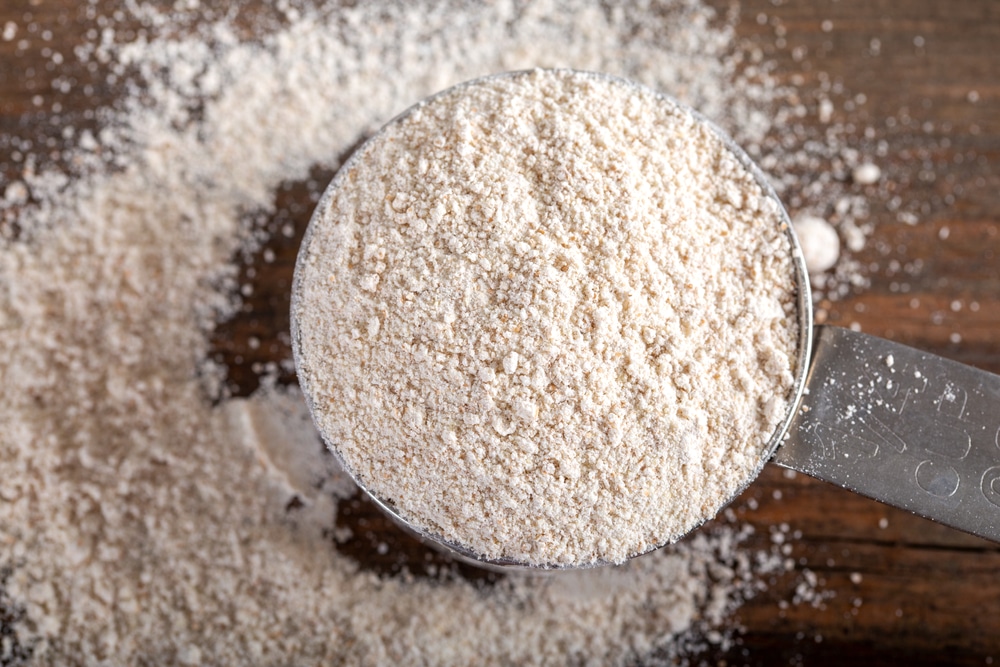
This type of flour is also a good replacement because both flours share several similarities. Einkorn is also an ancient grain, and it has a flavor profile like spelt flour. The only issue is that it’s challenging to find einkorn flour in grocery stores, so you might have to purchase it online.
You can alternate spelt flour with an equal amount of einkorn flour. Just be careful with the amount of water you use because einkorn flour is less absorbent.
Start with small amounts so that your dough doesn’t become too loose. As a general rule of thumb, use ⅓ the amount of water in the original recipe if you use Einkorn flour.
Einkorn flour typically works well as a replacement for spelt flour in baking quick batter bread that doesn’t require yeast. You can make delicious brownies, muffins, and banana bread.
Rice Flour
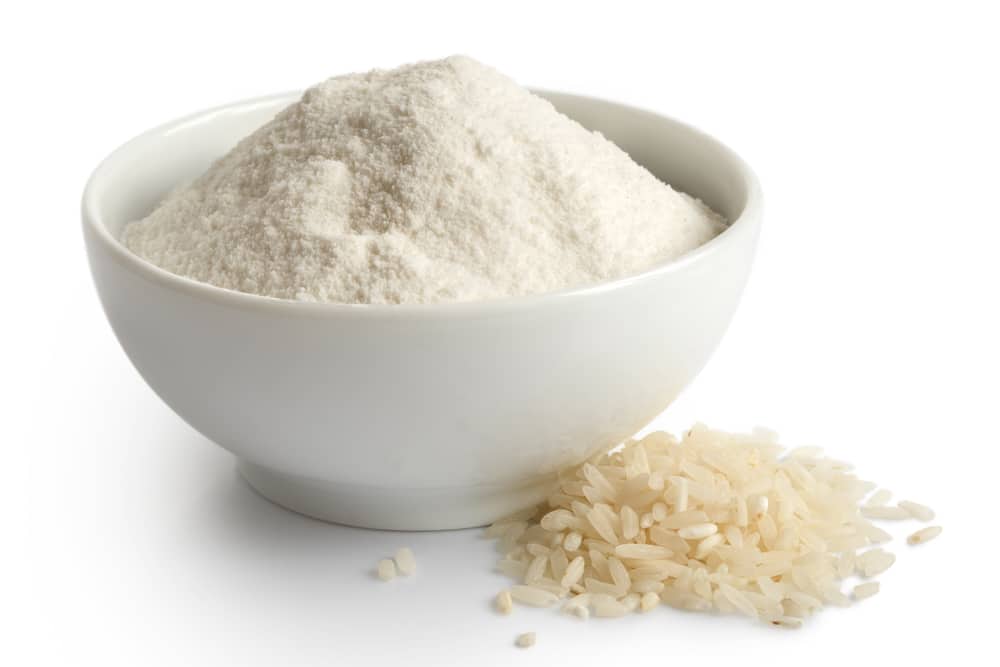
Brown rice flour is an excellent option for anyone with aversions to gluten and wheat because it’s gluten-free. It’s also more widely available and commonly known than Einkorn and Kamut flour.
Use ⅓ cup rice flour for every one cup of spelt flour. If a recipe has water, make sure to adjust the amount of water accordingly. If you can, gradually add the water so that you don’t end up with a loose dough.
Keep in mind that rice flour can end up making a dish have a grainier texture. Therefore, it’s best to use rice flour in dense bread and cookie recipes. You can also use rice flour to thicken soups.
You can learn more about using rice flour by reading our articles below:
All-Purpose Flour
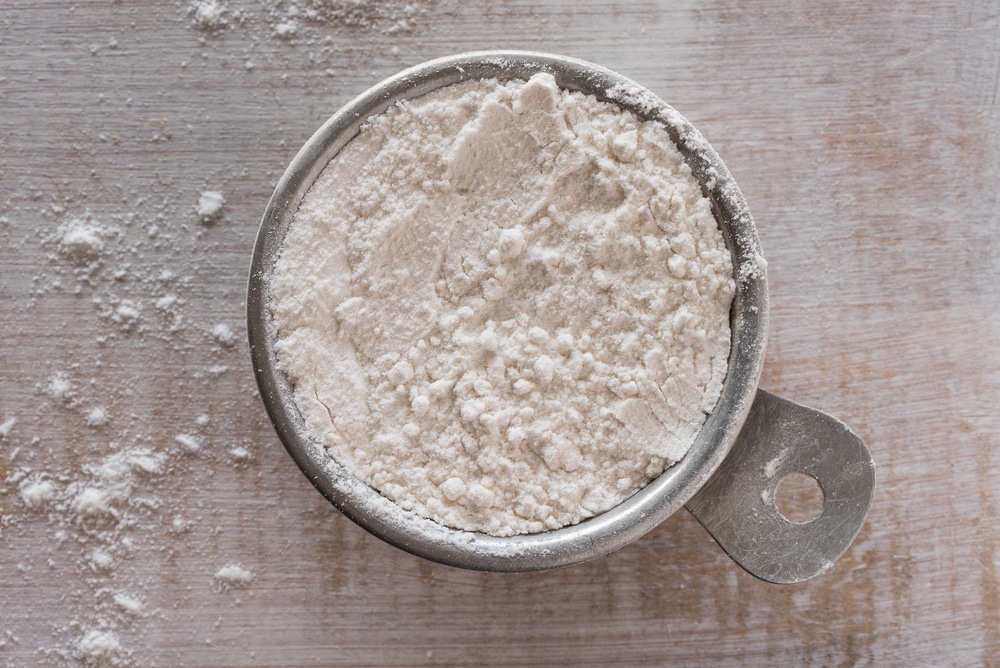
If you’ve run out of spelt flour, all-purpose flour is a great substitute because you might already have it, or it’s easy to find it in grocery stores.
You can replace equal parts all-purpose flour for spelt flour. You should be able to keep the water content the same as well.
All-purpose flour is a safe choice for a replacement because of its versatility. You can use it for baking bread, cookies, and pancakes. However, because it has a higher gluten content, it can cause digestive issues for individuals with gluten sensitivity.
Barley Flour
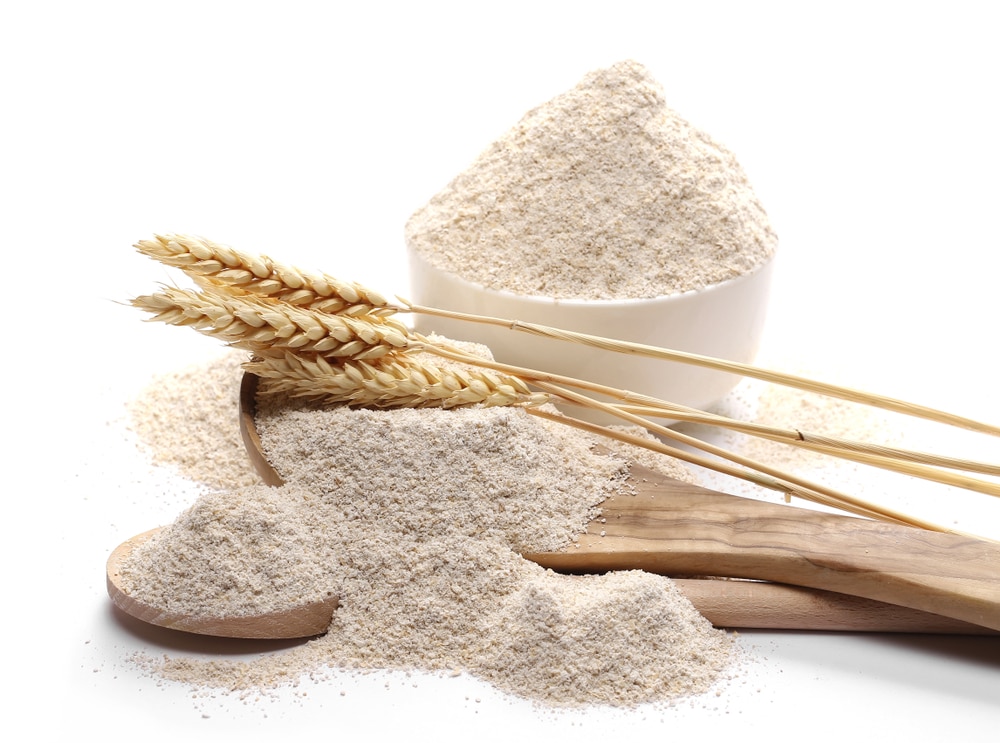
Barley flour is a good alternative to spelt flour because it’s high in protein and packed with nutrients. It has low amounts of gluten, but it’s not entirely gluten-free. Therefore, people with gluten intolerance should be wary of using barley flour and avoid using it altogether.
If you’re substituting with barley flour, use ½ cup of barley flour for every one cup of spelt flour.
Barley flour has a sweet and nutty flavor, and it works well with baking all kinds of baked goods, including bread, cookies, muffins, and pancakes. It’s important to note that barley flour has a strong flavor, so it can overpower other flavors. Therefore, don’t use it in recipes that have a mixture of flavor profiles.
Related Questions
There are key differences between spelt flour and plain flour, or all-purpose flour. First, spelt flour typically goes through a stone milling process that mills the whole grain. This process means that the bran, germ, and endosperm of spelt grain all get ground up.
On the other hand, the husk and bran of the grain used in all-purpose flour get removed before the grain gets milled. The majority of all-purpose flour is also bleached to give the flour a white color and smoother texture.
It’s easier to use all-purpose flour for baking bread because it has a higher gluten content than spelt flour. Spelt flour isn’t as easy for baking bread because it has lower gluten content. However, you can prepare other baked goods that don’t require a rise. Spelt flour is great for making cookies, pancakes, and muffins.
Whole wheat flour is actually a general term for any type of wheat flour made by grinding the whole wheat kernel. Therefore, spelt flour is a type of whole wheat flour.
It can get confusing because different countries may use different types of wheat for their whole wheat flour. For example, the majority of whole wheat flour made in the United States is hard winter red wheat.
Meanwhile, the United Kingdom and India use whole wheat flour made of white wheat.
Therefore, it’s helpful to know if a recipe originates from a different country. Red wheat flour is great for baking loaves of bread with thick, hard crusts. White wheat flour creates softer bread, such as dinner rolls.
Overall, whole wheat flour is a broader umbrella term and spelt flour is a type of wheat flour that can fall under whole wheat flour.
Spelt is a type of wheat, and it has similar properties to whole wheat flour along with some nutritional differences.
Both spelt and whole wheat flour are high in carbs. However, spelt contains higher levels of protein. Whole-grain spelt flour has additional vitamins and minerals:
1. Vitamin B
2. Vitamin E
3. Calcium
4. Magnesium
5. Manganese
6. Iron
7.Phosphorus
8.Selenium
9. Zinc
Spelt also has positive effects on people’s health. It has higher antioxidants than common wheat, and these antioxidants can help protect brain and heart cells. Other ways spelt benefits people’s health are improving cholesterol levels, reducing blood pressure, and lowering risks of heart disease.
You can use spelt flour to make delicious bread. It functions similarly to all-purpose flour, but it has an additional distinct sweet and nutty flavor.
Since it’s not gluten-free, bread made with spelt flour can be light and airy. However, it does have lower gluten content, so it won’t form as much gluten as all-purpose flour.
The best way to bake bread with spelt flour is to bake it immediately after the second proofing. If you wait too long, the rise will deflate, and you’ll end up with a flat bread.
Yes, spelt flour is low in gluten. It tends to be easier to digest, so it can be a good alternative for people with minor gluten intolerance.
However, it’s important to note that spelt flour is not entirely not gluten-free. Therefore, individuals with celiac disease should not consume spelt flour. There are other safer gluten-free alternatives that you can try:
1. Amaranth Flour
2. Rice Flour
3. Quinoa Flour
4. Buckwheat Flour
5. Coconut Flour
6. Almond Flour
7. Cassava Flour
More on Flour Substitution:


